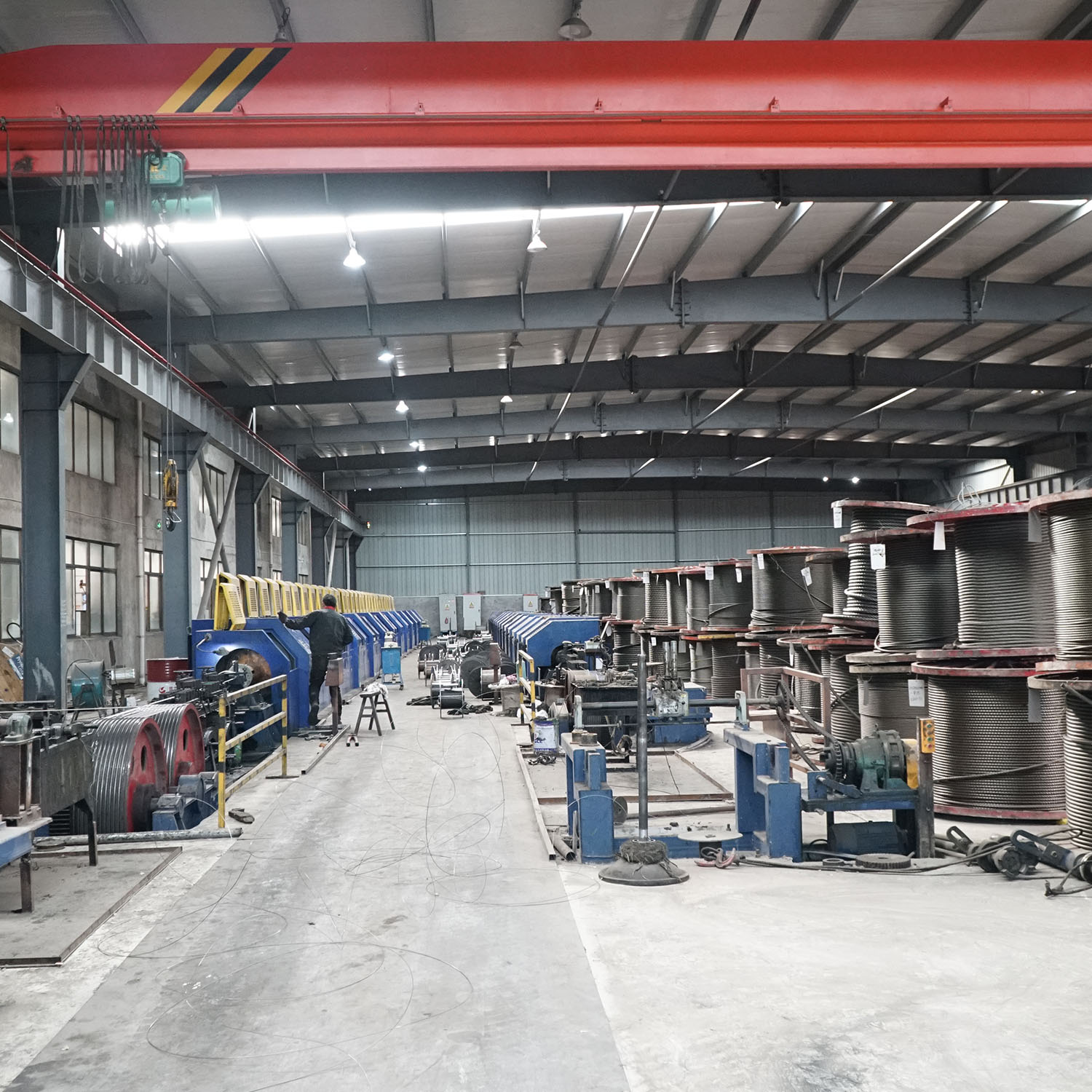Table of Contents
Innovative Uses of Steel Cable in Modern Construction Projects
Steel cable is a versatile and durable material that has been used in construction projects for centuries. Its strength and flexibility make it an ideal choice for a wide range of applications, from supporting bridges and buildings to securing heavy machinery. In recent years, steel cable has been used in innovative ways to create unique and visually striking structures that push the boundaries of traditional construction techniques.
One of the most common uses of steel cable in modern construction projects is as a support system for bridges and buildings. Steel cable is often used to suspend large structures, such as suspension bridges, from tall towers or anchor points. The high tensile strength of steel cable allows it to support heavy loads over long distances without stretching or breaking. This makes it an ideal choice for projects that require a strong and reliable support system.
Another innovative use of steel cable in construction is as a tensioning element in pre-stressed concrete structures. Pre-stressed concrete is a type of concrete that has been compressed or tensioned before it is poured, which helps to increase its strength and durability. Steel cable is often used to apply the tension to the concrete, creating a strong and stable structure that can withstand heavy loads and harsh weather conditions. This technique is commonly used in the construction of bridges, parking garages, and other large-scale infrastructure projects.
In addition to its structural uses, steel cable is also used in a variety of other applications in modern construction projects. One example is the use of steel cable as a Safety barrier on construction sites. Steel cable can be strung between posts or barriers to create a secure perimeter around a work area, preventing unauthorized access and protecting workers from falls or other hazards. Steel cable can also be used as a guide wire for heavy machinery or equipment, helping to ensure that it is positioned correctly and securely during construction.
One lesser-known use of steel cable in construction is as a “PE wire” or “permanent elongation wire.” PE wire is a type of steel cable that has been specially treated to have a controlled amount of elongation or stretch. This allows the cable to absorb energy and movement without breaking, making it ideal for use in seismic or high-wind areas. PE wire is often used in conjunction with turnbuckles, which are devices that can be tightened or loosened to adjust the tension in the cable. This combination of PE wire and turnbuckles allows for precise control over the stability and flexibility of a structure, making it an ideal choice for projects that require a high degree of structural integrity.
Overall, steel cable is a versatile and innovative material that has a wide range of uses in modern construction projects. From supporting large structures to providing safety barriers and tensioning elements, steel cable plays a crucial role in the success of many construction projects. By understanding the unique properties and capabilities of steel cable, engineers and architects can continue to push the boundaries of traditional construction techniques and create structures that are both functional and visually striking.
Understanding the Purpose and Benefits of a PE Wire in Various Applications
Steel cables are a versatile and durable material that is commonly used in a variety of applications. One important component of steel cables is the PE wire, which plays a crucial role in ensuring the strength and flexibility of the cable. In this article, we will explore the uses of steel cables, the purpose of a PE wire, and the benefits of using steel cables and turnbuckles in various applications.
Steel cables are widely used in construction, transportation, and manufacturing industries due to their high tensile strength and resistance to corrosion. These cables are made up of multiple strands of steel wire twisted together to form a strong and flexible Rope. The PE wire, or polyethylene wire, is a type of plastic coating that is applied to the steel cable to provide additional protection against wear and tear, as well as to enhance its flexibility.
The PE wire serves several important purposes in steel cables. Firstly, it acts as a barrier against moisture and other environmental factors that can cause corrosion and weaken the cable over time. By preventing water and other corrosive substances from coming into contact with the steel wire, the PE wire helps to prolong the lifespan of the cable and maintain its structural integrity.
Additionally, the PE wire helps to improve the flexibility of the steel cable, making it easier to bend and maneuver in various applications. This is particularly important in industries such as construction and transportation, where steel cables are often used to lift heavy loads or secure structures. The flexibility provided by the PE wire allows the cable to bend and twist without breaking, ensuring that it can withstand the rigors of daily use.

In addition to the PE wire, steel cables are often paired with turnbuckles to further enhance their versatility and functionality. Turnbuckles are devices that are used to adjust the tension of a cable or rope by rotating a threaded rod that is connected to two end fittings. By tightening or loosening the Turnbuckle, the length of the cable can be adjusted to suit the specific requirements of the application.
Turnbuckles are commonly used in applications such as rigging, construction, and marine industries, where precise tensioning of cables is essential for safety and performance. By using turnbuckles in conjunction with steel cables, operators can easily adjust the tension of the cable to ensure that it is securely anchored and able to support the required load.
Overall, steel cables with PE wire coating and turnbuckles offer a reliable and versatile solution for a wide range of applications. Whether used in construction, transportation, or manufacturing, these components work together to provide strength, flexibility, and durability in demanding environments. By understanding the purpose and benefits of a PE wire in various applications, operators can make informed decisions about the use of steel cables and turnbuckles to meet their specific needs.
The Importance of Steel Cable and Turnbuckles in Heavy-Duty Rigging and Lifting Operations
Steel cable is a versatile and essential component in heavy-duty rigging and lifting operations. It is commonly used in a variety of industries, including construction, mining, and marine applications. Steel cable is known for its strength, durability, and reliability, making it an ideal choice for demanding tasks that require the lifting and moving of heavy loads.
One of the key uses of steel cable is in the construction industry, where it is used for lifting and securing heavy materials and equipment. Steel cable is often used in conjunction with turnbuckles, which are devices that are used to adjust the tension of the cable. Turnbuckles are essential for ensuring that the cable is properly tensioned and secure, which is crucial for safety and efficiency on the job site.
In addition to construction, steel cable is also commonly used in mining operations. In the mining industry, steel cable is used for a variety of tasks, including hoisting equipment, Transporting materials, and securing mine Shafts. The strength and durability of steel cable make it well-suited for the demanding conditions found in mines, where heavy loads and harsh environments are common.
Another important use of steel cable is in marine applications. Steel cable is used on ships and offshore platforms for a variety of tasks, including mooring, towing, and lifting heavy equipment. The corrosion-resistant properties of steel cable make it ideal for use in marine environments, where exposure to saltwater and harsh weather conditions can cause other types of cables to deteriorate quickly.
When using steel cable for rigging and lifting operations, it is important to ensure that the cable is properly maintained and inspected regularly. Over time, steel cable can become worn or damaged, which can compromise its strength and safety. Regular inspections can help to identify any issues with the cable before they become a safety hazard.
In addition to steel cable, another important component in heavy-duty rigging and lifting operations is the PE wire. PE wire, also known as polyethylene wire, is a type of synthetic rope that is commonly used in marine and industrial applications. PE wire is lightweight, strong, and resistant to abrasion, making it an ideal choice for tasks that require a high level of durability and flexibility.
PE wire is often used in conjunction with steel cable for lifting and securing heavy loads. The combination of steel cable and PE wire provides a strong and reliable solution for a wide range of rigging and lifting tasks. PE wire is also commonly used in marine applications, where its resistance to saltwater and UV exposure make it well-suited for use in harsh marine environments.
In conclusion, steel cable and turnbuckles are essential components in heavy-duty rigging and lifting operations. Whether used in construction, mining, or marine applications, steel cable provides the strength, durability, and reliability needed to safely lift and move heavy loads. When used in conjunction with PE wire, steel cable can provide a versatile and effective solution for a wide range of rigging and lifting tasks. By ensuring that steel cable is properly maintained and inspected regularly, companies can help to ensure the safety and efficiency of their operations.

